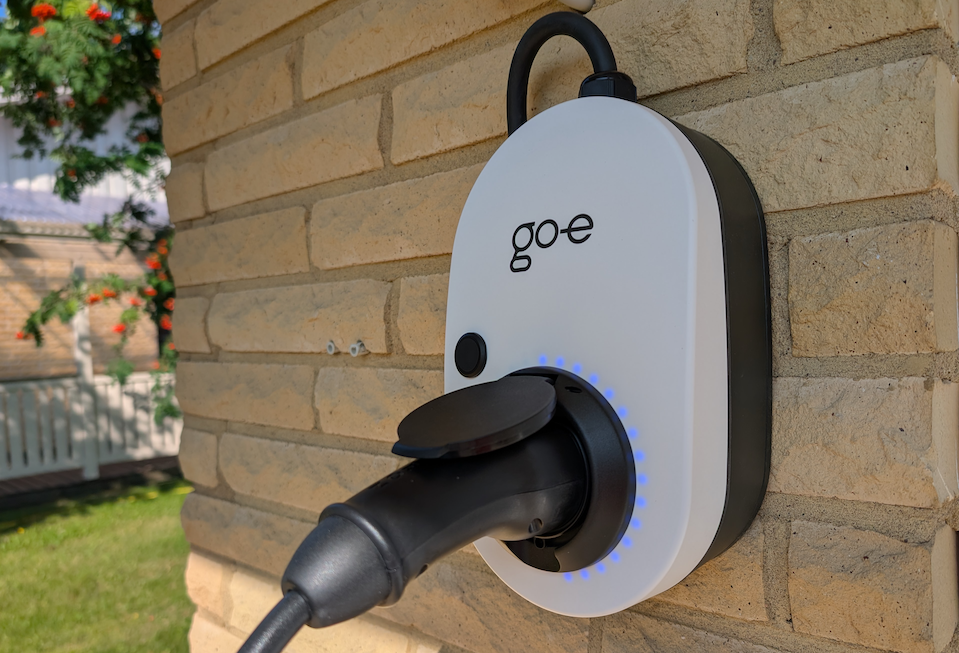
Review: Go-e Gemini – The EV charger for Smart Homes
Second electric car entered our household couple months ago and that means a second car charger, just to make charging a bit more easier. Previously I owned a Wallbox Pulsar Plus, but unfortunately it did not support all my needs anymore, so I had to pass it forward. For new chargers I chose two go-e gemini as it promised to fulfil all my needs. Accompanied with go-e controller, it should handle all the load balancing as well.
Sales and installation was done by friendly local evasema.fi. So if you need a EV charger or accessories, go and order from them. They also have great sales every now and then!
Ok, back to bussiness.. what I required from the chargers was solar charging for both chargers, dynamic load balancing and a local API. Let’s to check through the charger and see if it offers anything extra and how well does it do my requirements!
Specifications
Go-e Gemini has four variants to choose from: flex with CEE16A socket and fixed connection. Both available as 11kW or 22kW max charging power. All the variants includes same features.
- Physical dimensions: 16 x 26 x 11 cm
- Weight: 2.2kg
- WLAN connectivity (2.4Ghz)
- RFID support (one tag included with the package)
- Internal fault current protection: AC 30 mA, DC 6 mA
- 11kW or 22kW charging (depending on the variant)
- IP65 and IK08 device classification
- APP Support
- Local and cloud APIs
- Automatic energy measurement
Design and Hardware
Design of the charger is very plain. Only type 2 socket, one button and a led ring is visible for the user. The power connector is above the device so the charger can’t be installed on a wall hiding power cord like most of competitors chargers can.
In the middle of the charger there’s a type 2 socket so a user would need to buy a separate charging cable. I’m quite uncertain yet if I like it or not. The good thing is that you can get a cable that suits your needs the best. Like proper lenght or maybe even a cable with a Tesla button? The bad thing though, it brings up the expenses. The cable can also be locked so you don’t have to worry about someone stealing the cable even if left in place while not charging.
The one and only button on the charger is placed for the user to change charging current. I don’t see much of a use of this as load balancing (optional, only available with go-e controller) should handle provided current dynamically. If no load balancing controller is used then this setup could be a nice addition.
There’s a configurable led ring around the type 2 socket to describe status and amperage of the charger. The brightness is configurable so you can find a good settings dpending i the charger is placed directly on the sun or in a dim garage.
The charger has also non-visible RFID reader at the bottom part of the device and can be configured to charge only with using a RFID tag (one included).
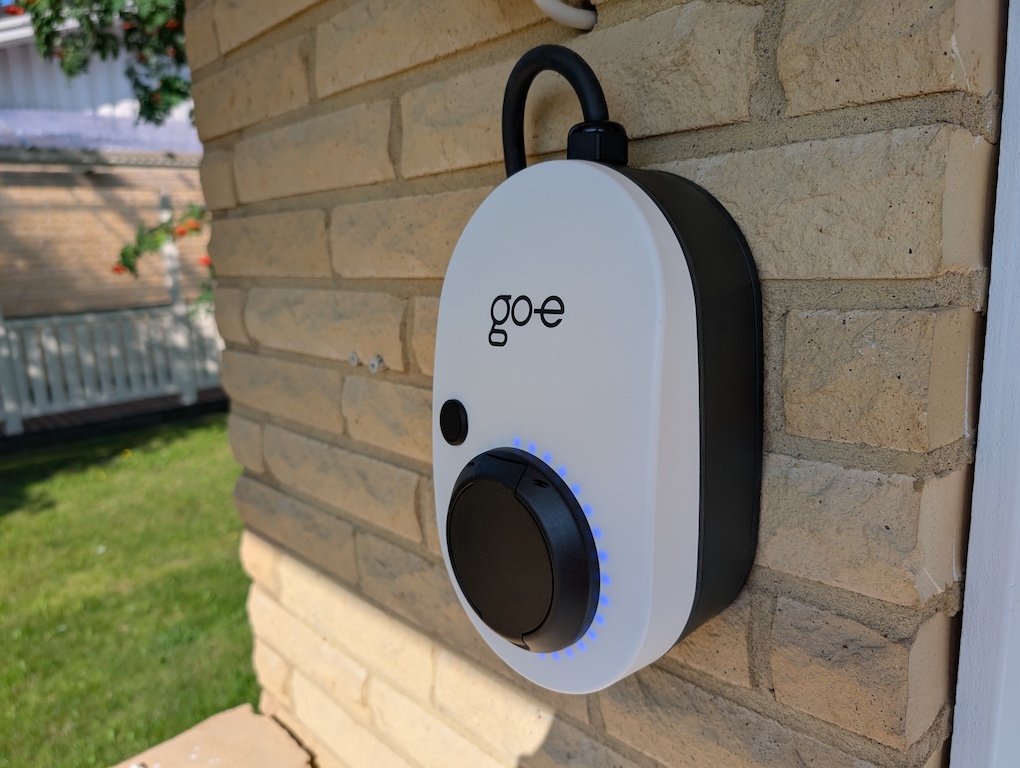
Features
Go-e Gemini is full of basic and advanced features. There are three main charging modes: eco, basic and daily trip.
I will next go through those three main modes and give you my insights on those as well as some other mentionable features.
Basic charging
The charger supports, obviously, a regular charging with a user selectable current all the way from 6A to max 16 or 32A, depending of the version bought. Just plugging in the car and charging will start automatically, simple as that.
Eco charging
This is charging mode all users will love: charging with surplus solar or using flexible energy tariffs. Using this mode user can configure either to charge with solar or charge when electric stock prices drop below certain price.
Using the solar charging does require you to have solar production (obviosly), but it also requires a Go-e controller to keep track of surplus energy. Go-e controller will keep the charger informed about energy consumed vs. produced and will use surplus energy to charge the car. The charger is that smart it can even switch between 3-phase and 1-phase charging depending of the surplus amount. E.g. EV minimum charging currenty is 6A and when the voltage is 230V, then the minimum power is 4140W (3*230V*6A), that’s quite big surplus required for start charging. But, when single phase charging the required surplus is only 1380W (1*230V*6A). The charger itself does not have AC-AC conversion from 3-phase to 1-phase, but it will instead sell from two phases to grid and buy from one, genius!
Flexible tariff charging has most of the major electric companies information staight out of the box, but even if your company is not listed, you can still select the closest one. At least in Finland all the energy stock is the same and it does not actually matter which company you are using. The flexible energy tariff really works as specified: charge when the price is below a user defined point. What I miss with this feature though is to use a relative values. I mean, the user could set the trigger for 3c/kwh, but the price might not ever drop below that point and your car wont be charged.
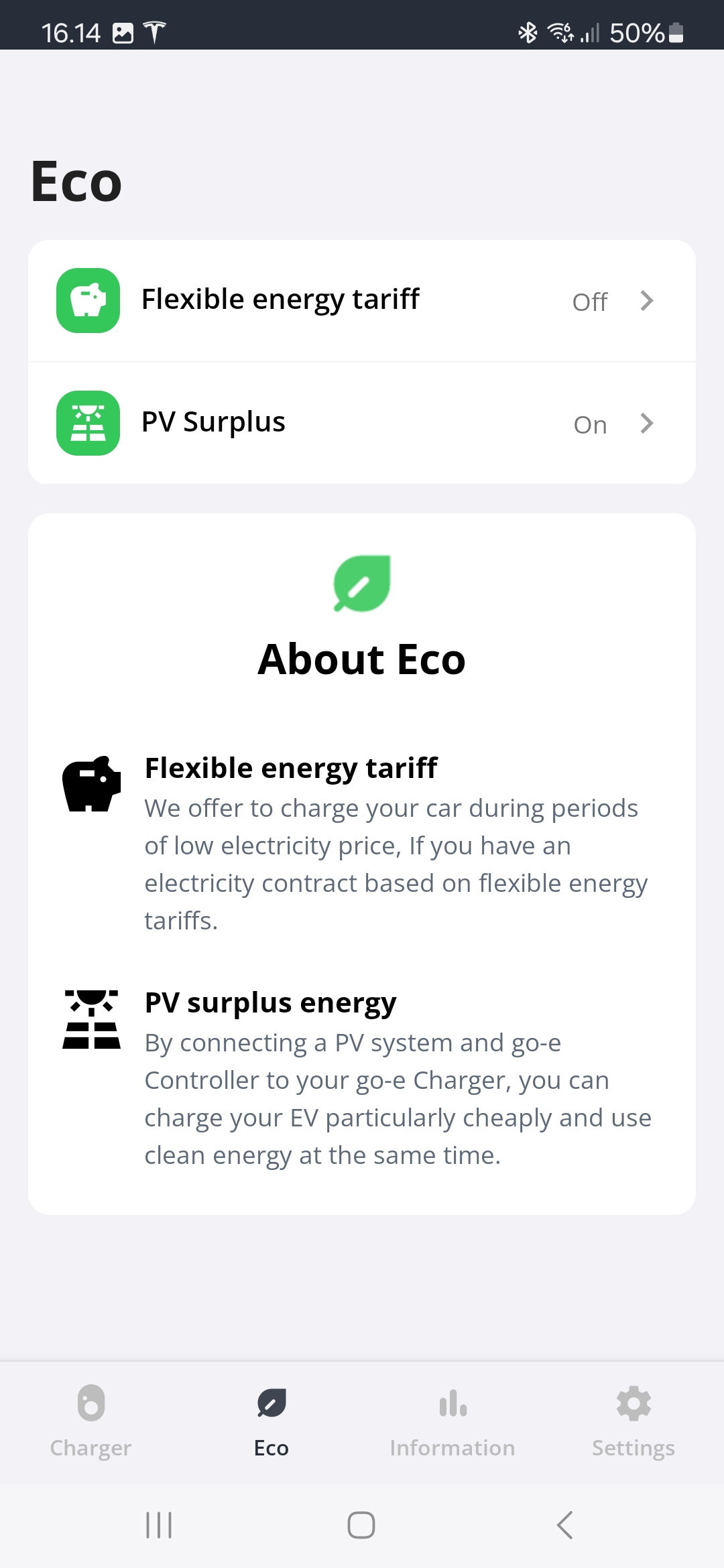
Daily trip
This charging mode is a little odd bird here. Using this mode the user needs to set charging completion time and amount of energy required to be charged. The charger will the handle the rest and make sure enough energy is charged into the car at the set time. There’s also an option to use flexibe energy tarrifs in here as well so the car would be charged during the cheap hours.
This option does sound tempting, but you really can’t be sure when the car is charged and for which price. I would like to see an option to set just normal charging schedules as well. However, this daily trip charging is definitely something I will keep digging a bit deeper during my route to automate the car charging as much as possible later on..
Load balancing
The idea of dynamic load balancing is to keep your main fuses safe. It should not matter when you are charging and for how big currency, the load balancing automatically adjusts your charging current to keep the load in limit. Load balancing is a ‘must‘ for residental houses with multiple chargers or lots of other high power electrical appliances, like electric heating or a sauna.
To use load balancing, go-e controller is required to be installed on your main power lines. lt uses your personal WiFi to communicate with the charger(s).
For load balancing I’ve quite certain the go-e has thought of it all. E.g if the WiFi connectivity is lost or the communication with the controller broken, the chargers will drop the charging current to predefined safe value (default 6A), so it won’t burn fuses even on the ‘worst‘ technical failure.
Other noteworthy features
Load balacing groups – you can make multiple chargers to be part of load balancing groups. It’s possible to define a maximum usage amperage for each of the group.
Scheduler – the charger has a scheduler making it possible to active on defined times of day only. Note: this is NOT a scheduled charging.
Information – you can get heck load of information of the charging event and charger itself.
RFID – Supports charging by RFID tags
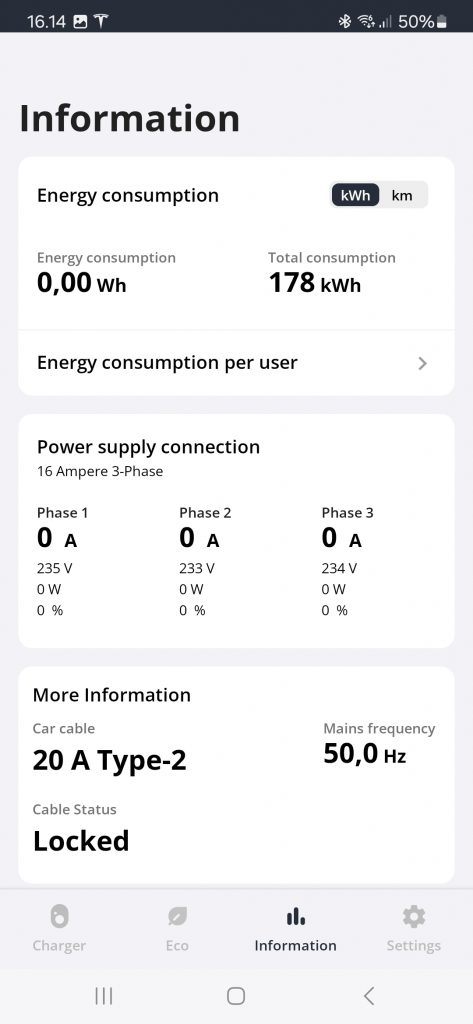
The go-e app
Go-e offers a free app to control your charger(s) and the controller. The app is available for Android and iOS.
Using the app user can easily switch between charging modes and make required configurations to suit everyone’s needs – charging mode can be changed by just one click once the app is started.
Doing configurations through the app can be quite complex though. The app tries to explain every feature, but in my opionion it fails to do so. The app has ‘about’ box in almost every feature, but those explanation texts are either too complicated to understand clearly or does not give out all required information right away. Even though giving out the information poorly, you can always test the functionality or just contact go-e support for more information.
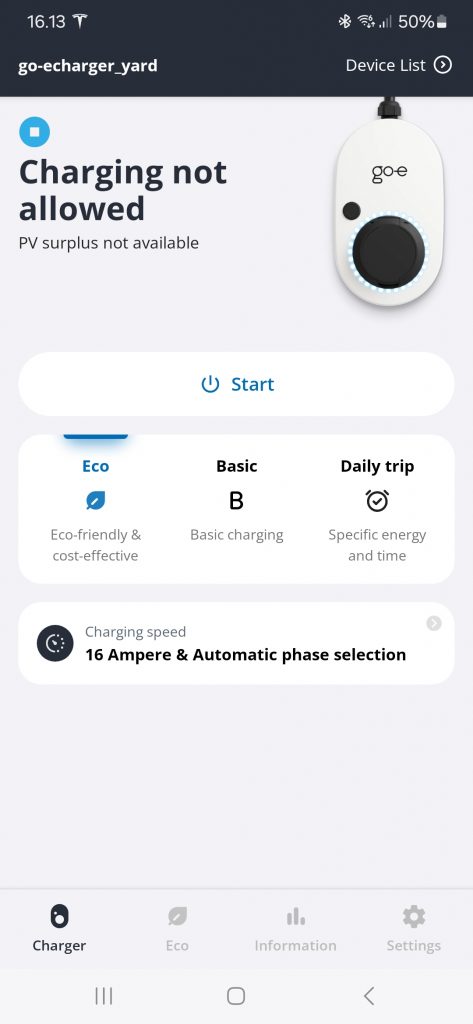

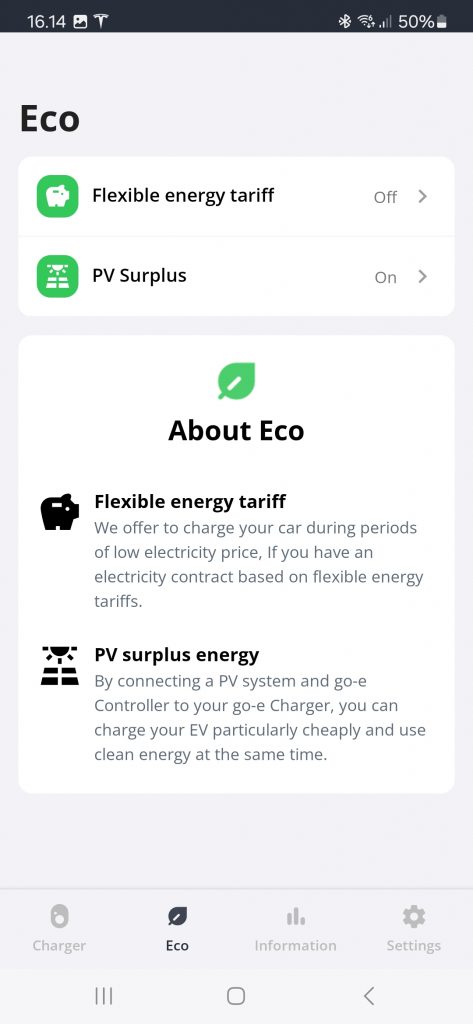
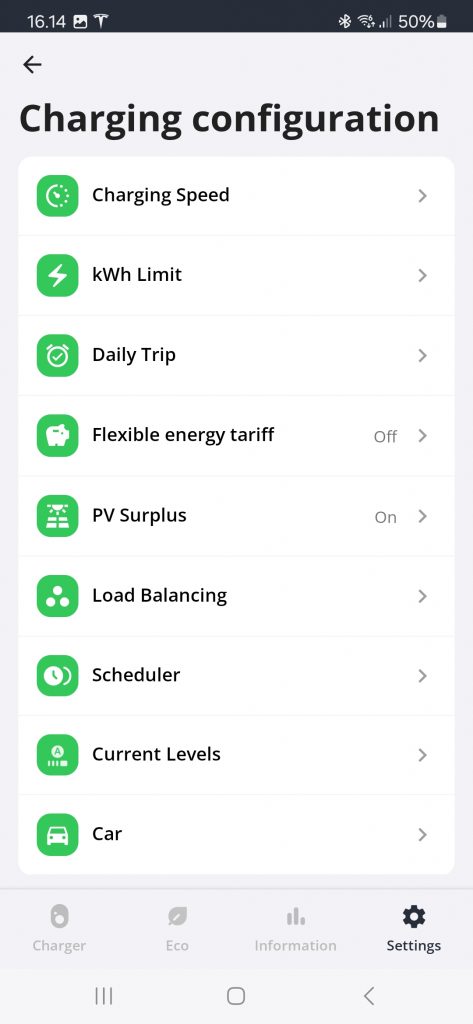
APIs
For advanced users, go-e offers vast amount of different APIs: local REST API, cloud REST API, MQTT, OCPP and ModBus. So there’s definately a suitable API for every smart home system. All the APIs offer the same functionality (except OCPP that follows OCPP 1.6 protocol).
Even though there are many possible APIs it all eventually comes what does tha APIs has to offer. Go-e API has the basic functionality available from changing charging modes and charging current to configuring daily trip mode. All API functionality can be looked up on go-eCharger-API-v2 github repository.
There are some API information I would like to see in the future like getting the current SOC of connected car or configuring daily trip functionality to use total SOC instead of added energy. note: this is not possible through the app either, so it’s not just API functionality that is missing.
Bottom line of the API functionality of go-e chagers: it has the best and vast APIs so far I’ve ever seen on an EV charger.
Home Assistant Integration
Again first in the line, go-e offers out of the box Home Assistant integration through MQTT. Through the MQTT go-e charger publishes all the necessary status information and control data to Home Assistant, including, but not limited to, charging status, current change and daily trip setup.
Heck, even the go-e controller can be configured to use MQTT (with Home Assistant discovery data), so you can get information about your total grid energy and/or solar power system.
With go-e charger firmware version 56.8, the MQTT provides us following data to Home Assistant directly:
| Sensor | Configuration | Diagnostic |
| Allowed Charge Current Allowe to Charger Car State Current (All three phases) Energy Charged Error State Grid Frequency Load Balancing Amperage Power Factor (All three phases + N) Power (All three phases + N) Power Total Temperatures Total Energy Charged Voltage (All three phases + N) | Clear Energy Limit Clear Transaction Force Single Phase Force State Logic Mode (Eco, Basic, Daily Trip) Set Energy Limit Set Max Amperage Set Next-Trip Energy Limit Set transaction | Wifi BSSID Wifi Gateway Wifi IP Wifi Signal Strenght |
And if you have the go-e controller installed, you can get all the data from all six possible clamps (individual clamps configurable from go-e app) and same diagnostics as with the charger.
Conclusion
Looks like go-e is a milage ahead of competitors when speaking of the smart home integration and API support. It also does have three great charging modes for every need and has support to use multiple chargers with load balancing and solar energy!
If you are looking for a charger to integrate with your smart home, look no further as this is the one for all the tinkerers out there! There’s still some small bits to improve, but at least I’m very wishful that the charger will be getting more improvements with firmware upgrades.
I’d suggest to get go-e controller along with the charger as it brings up so much more to your smart home than just a charger alone.
Pros
- Solar charging and usage of flexible energy tariffs
- Comprehensive local and cloud APIs with out-of-the-box Home Assistant support
- Go-e App is great
- Load balancing (requires go-e controller)
Cons
- Design is a bit dull
- Missing scheduled charging (does have daily trip charging instead)
Smart home score: 4.5/5
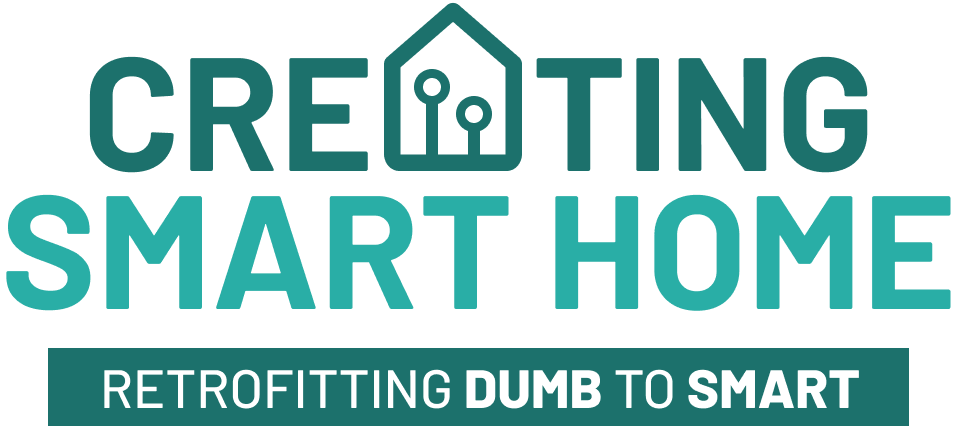
Charger can’t read car SOC through an AC charging connection, it is just not possible. Only DC fast chargers do that.
I use a car vendor specific cloud integration in Home Assistant to read the SOC.
Take a look at https://github.com/jonasbkarlsson/ev_smart_charging
That will automate the charging in Home Assistant so that the car only receives the minimum amount of energy needed during the cheapest hours. Of course with solar power you want to use solar instead. But just a tip fot the winter.
Thanks for clearing up the SOC and hinting about the ev_smart_charging integration. Will need to have better look on that one 🙂
What I’ve like to (eventually) have is scheduled charging with API to set up the schedules directly to go-e. I could then tell the chaerge store next schedules instead of depending of the Home Assistant connection. That would make it more fail-safe even though I’ve had no issues with HA itself.
Anyhow, since there’s no scheduled charging I need to rely the HA itself. Most probably I will use my AIO Energy Management for this and automation change the states from eco to basic when required.